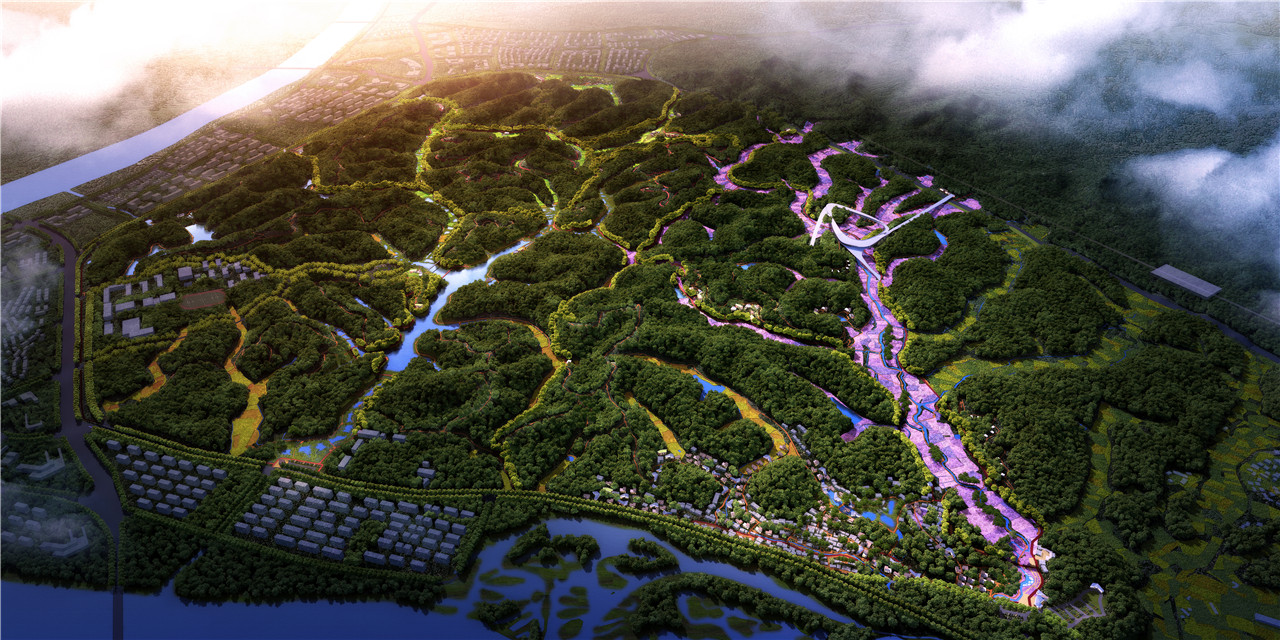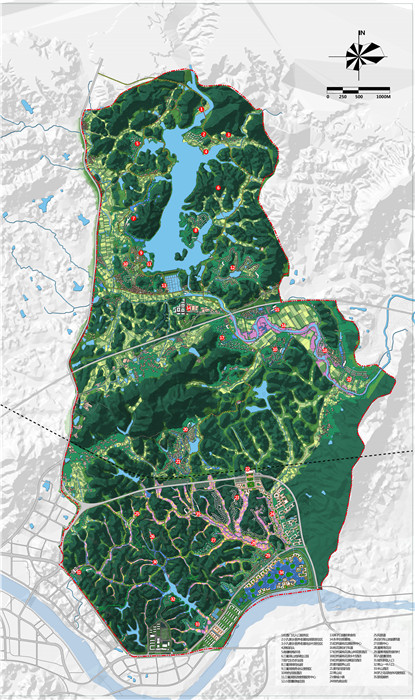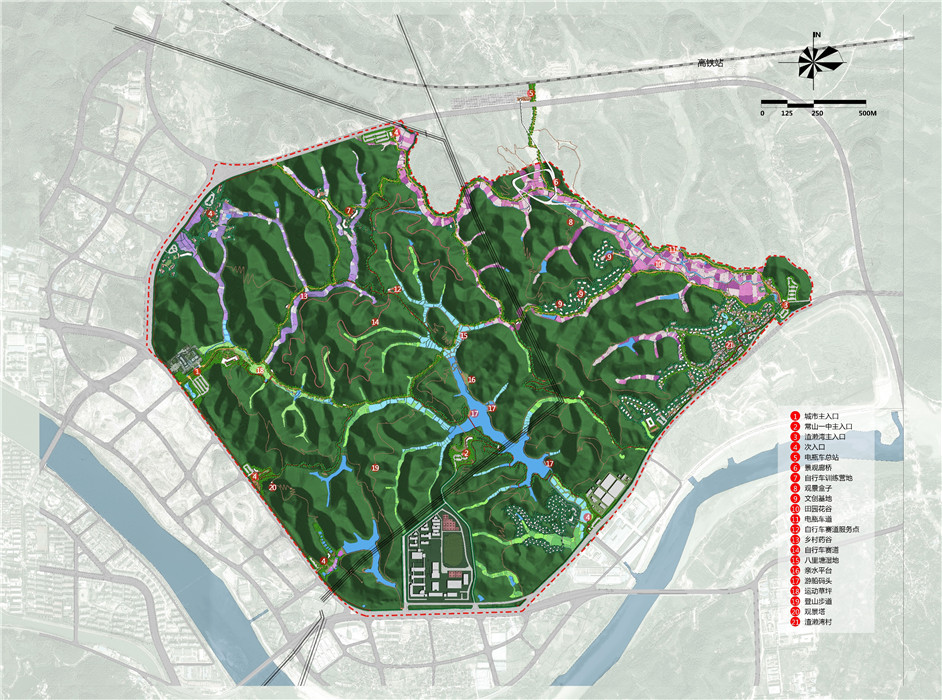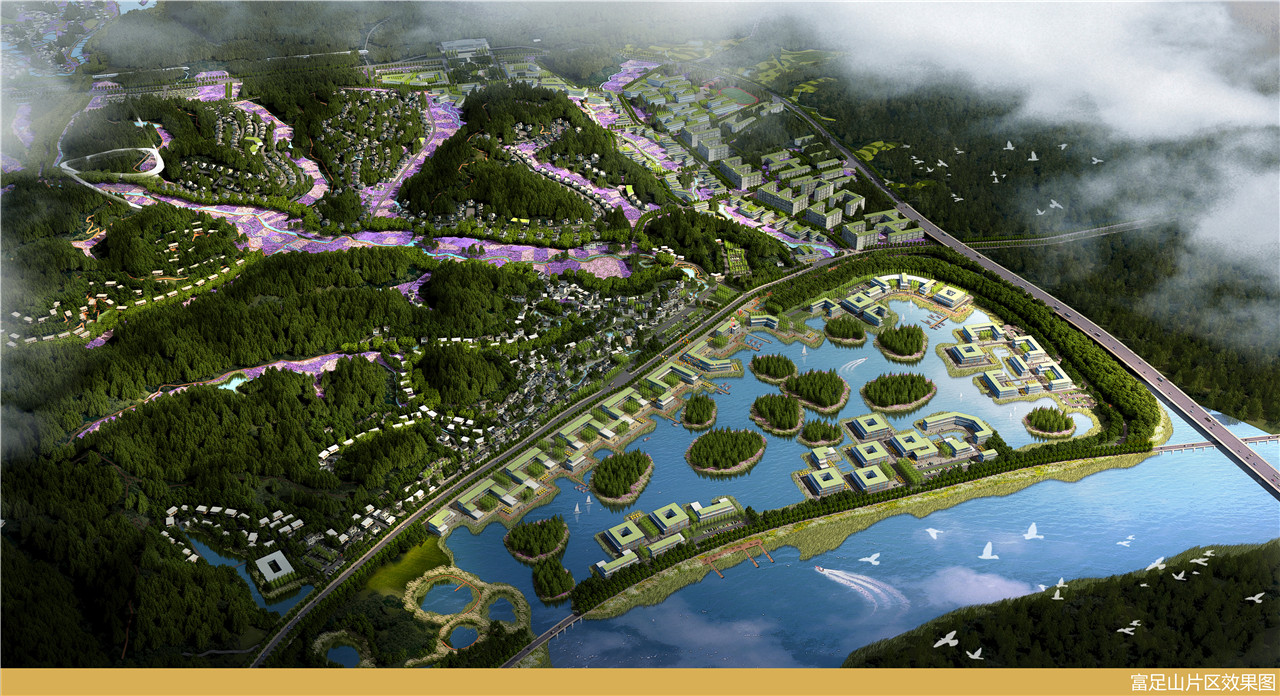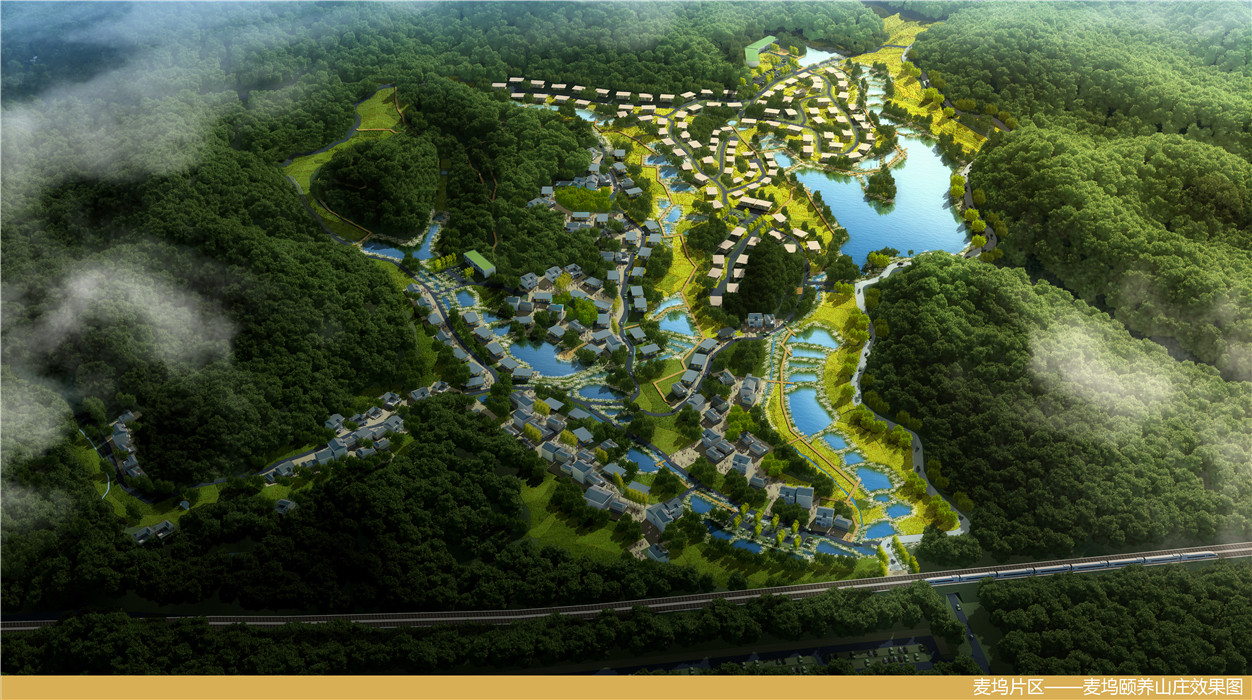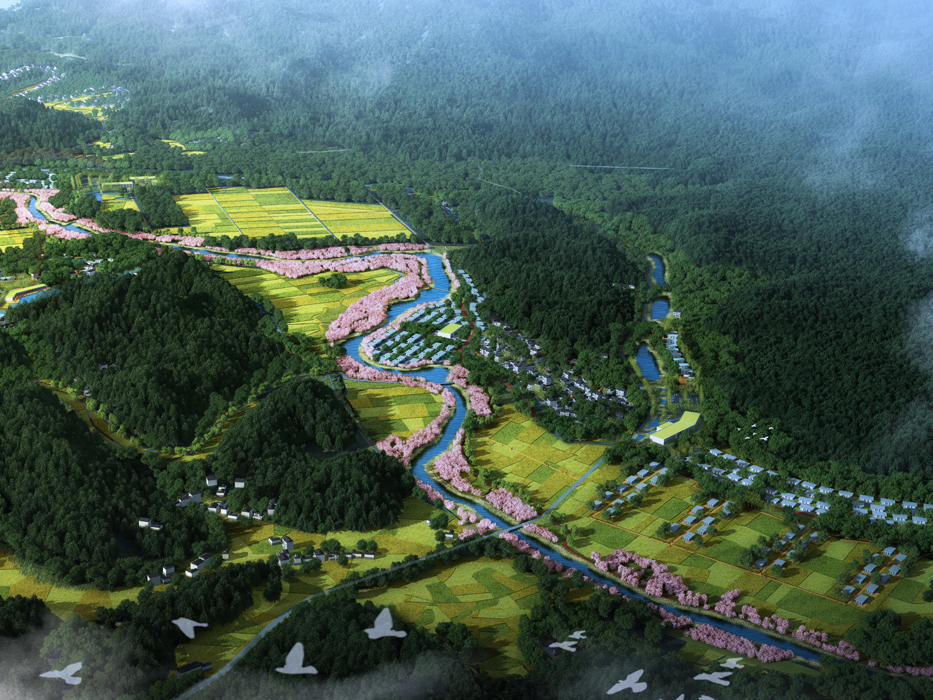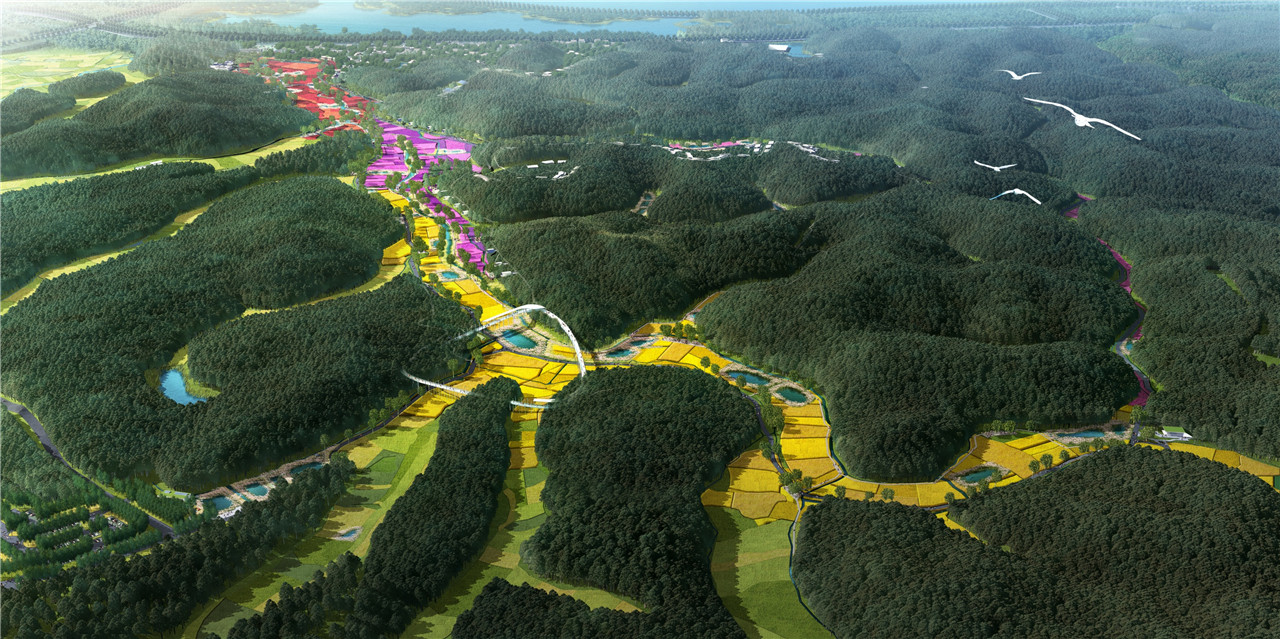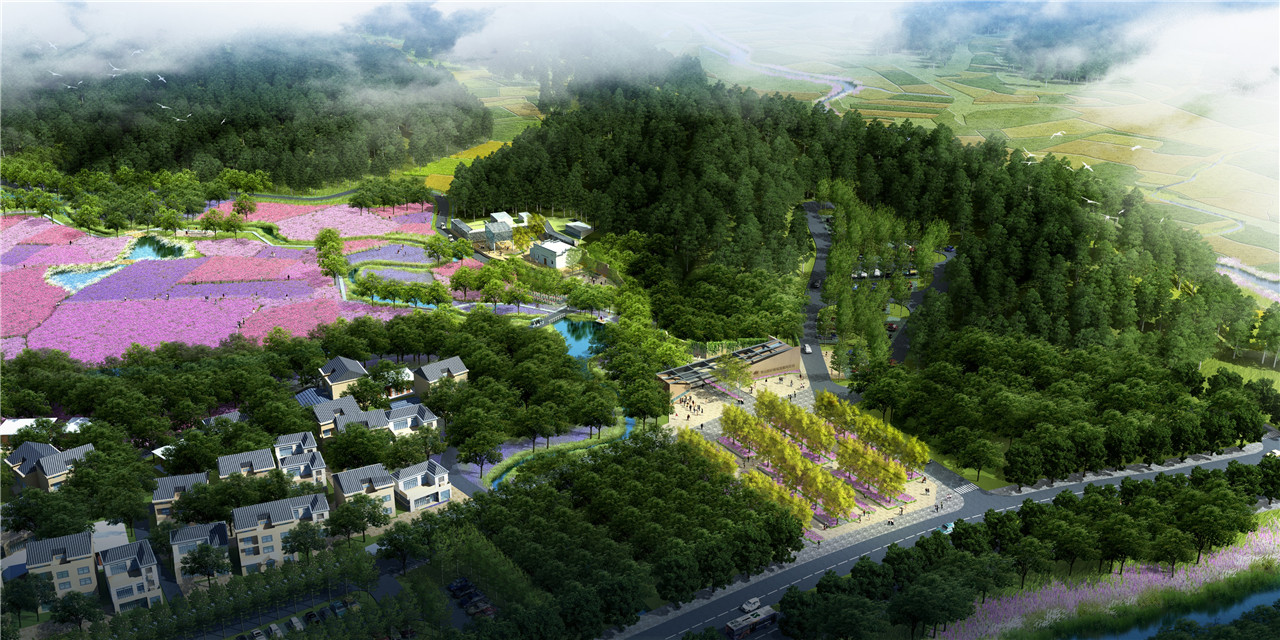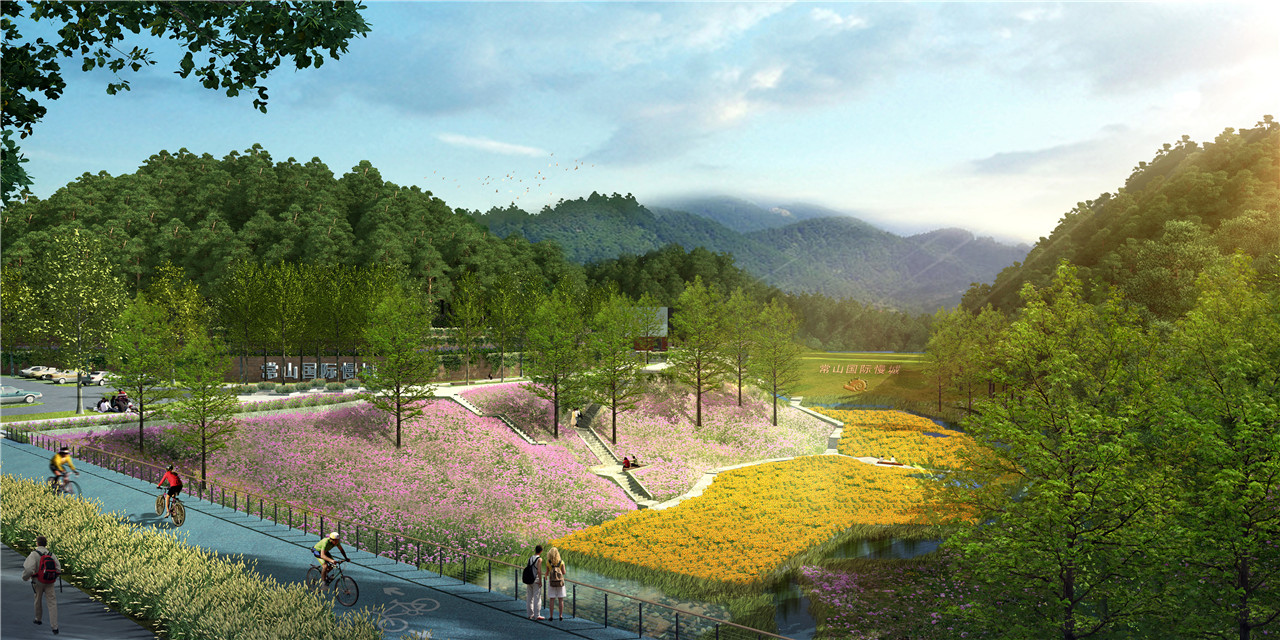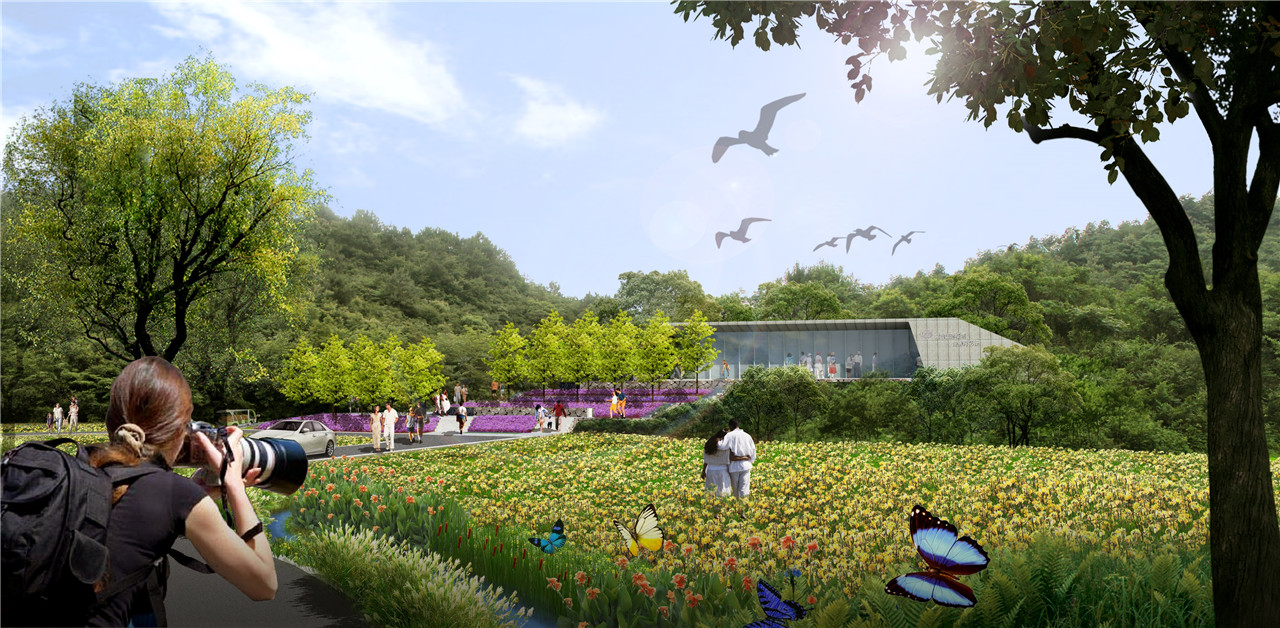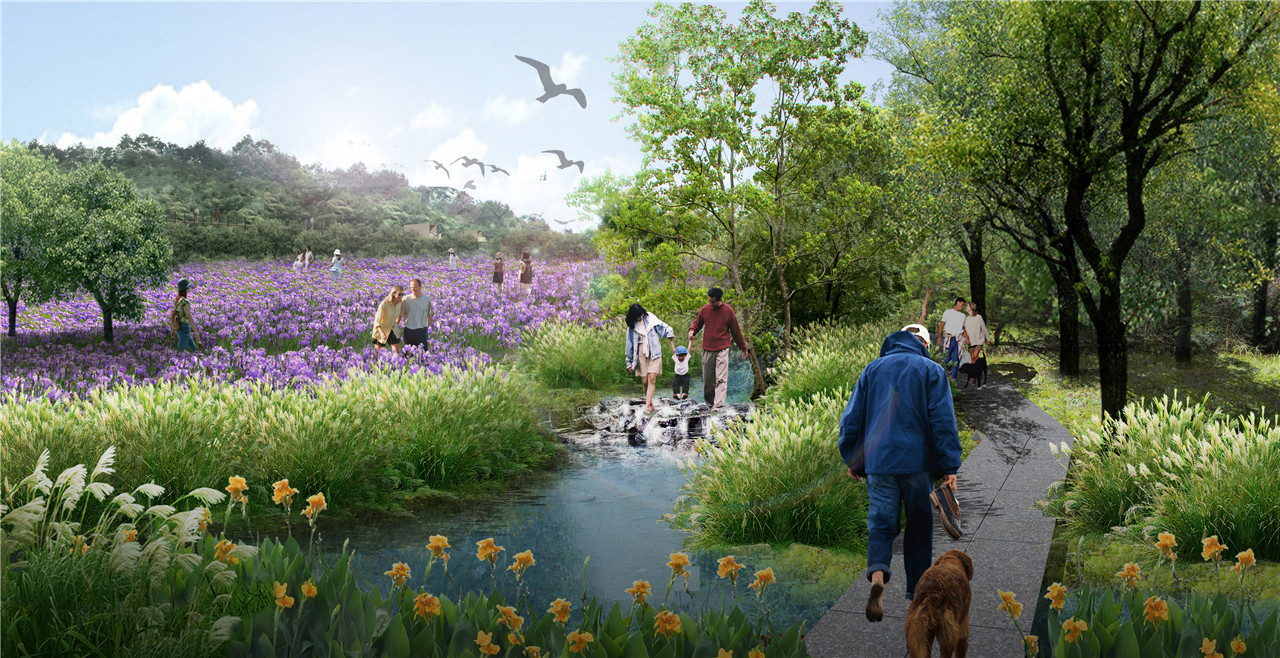Changshan County International Slow City Plan
Project Information
- Project Location:
- China Quzhou, Zhejiang
- Project Scale:
- 33.18 Square Kilometers
- Design Time:
- December 2015
Project Profile
1. Project Statement
The design and planning area for this project is 33.18 square kilometers, including the Sanqu Lake Tourist Resort Area (22.94 km²), Dream Island (1.18 km²), and the eastern hilly area (6.96 km²). It is bordered by Provincial Highway 48 to the east and Changshan Port to the south, with the future completion of the Changshan Port route indicating the possibility of diversified transportation modes. The northern part links with the Sanqu Stone Forest, complementing each other, while the western part relies on the main urban area, integrating with the new city to balance fast and slow development.
Changshan County is located at the intersection of four provinces and is a crucial point in the national leisure tourism corridor, enjoying dual development advantages. Leveraging its geographical advantages, the plan integrates mountains, waters, forests, and fields organically, protects local culture, and explores traditional folk lifestyles to construct:
A Slow City that integrates urban and rural areas: zero distance from the city.
A Slow City for mutual benefit: enriching the people, strengthening the county, and promoting business.
A Dislocated Shared Slow City: mountains, waters, urban fields, and villages.
A Regional Shared Slow City: touring famous mountains and experiencing the leisurely Changshan.
2. Objective and Challenge
Combining beautiful rural construction, promoting the "New Mountain and Countryside Movement," developing the second home model, and attracting urban private investment to inject new vitality into the Slow City. Relying on the development model of three zones and five districts along the Belt and Road, the plan aims to build the Changshan International Slow City into the backyard of Changshan County, a suburban leisure place for citizens within the region, an international leisure Slow City tourist resort within the city and provincial scope, and the origin of a new international lifestyle. The vision includes a millennium-long environment, with mountains, waters, forests, and fields, recreating the dream of Changshan's peach blossom land, accessible by high-speed rail and private car, enjoying the idyllic slow life.
3. Design Strategy
(1) Slow Leisure
Develop seven major product systems with sixteen leisure products to meet the diverse leisure needs of various groups. The functional layout forms three zones and five districts based on site characteristics and industrial distribution. The "three zones" from north to south are the Sanqu Lake Area (north of the Hangzhou-Jinhua-Quzhou Expressway to Songxiangmen), the Maiwu Area (south of the Hangzhou-Jinhua-Quzhou Expressway and north of Provincial Highway 48), and the Fuzushan Area (south of Provincial Highway 48 and north of Wenjiao Road). The "five districts" from north to south are the Sanqu Lake Resort District, the Pastoral Scenic Belt, the Maiwu Wellness Resort District, the Slow City Town, and the Fuzushan Green Core Area, the Zhase Bay Wetland Leisure Area.
Introduce ten investment projects to improve the Slow City’s infrastructure. The Sanqu Lake Area focuses on leisure agriculture around the lake, introducing elderly care apartments, luxury country inns, and developing eco-agricultural landscape parks and restaurants. The Maiwu Area, with its topographical and transportation advantages, offers various living experiences: mountain, field, and water residences. The Fuzushan Area, serving the new city, builds incubators for creative and sports industries, introducing floral landscapes and creative inns.
Following the trend of self-driving tourism, a new concept for the entire scenic area tourism is introduced, creating the most beautiful scenic route in Changshan, connecting natural and cultural landscapes and key development projects, forming a characteristic "Belt and Road development pattern" with Hongqiao Creek's high-quality farmland belt.
(2) Slow Ecology
Water: Organize the existing water system, retain key runoff channels for rain and flood safety, and identify key areas such as Zhase Bay Wetland Resort Island (originally Dream Island), Maiwu Wellness Villa, and the North Eco-Agricultural Park (originally the Quarry Park). New water areas totaling 19 hectares are added, integrating landscape water management.
Mountains: Green or transform exposed hills and abandoned terraces into development land, optimizing the visual integrity of the mountain landscape. Approved low hill and gentle slope projects cover 824 acres, converting 282 acres to development land, re-greening 447 acres of forest, and converting 72 acres to paddy fields under the dry-to-wet policy.
Forests: Diversify the landscape dominated by pine forests with colored-leaf species, enhancing zone characteristics. Key scenic areas and public forest edges will be enriched with colored leaves, ensuring seasonal scenery. Different tree species will be planted along the main roads, creating a unique landscape for each zone, including cherry blossoms along the Hangzhou-Jinhua-Quzhou Expressway in the north and autumn leaves like sweet gum and Chinese tallow trees in the south.
Fields: Develop multi-dimensional agricultural production, enhancing leisure, ecological, and scenic functions. Fields will be transformed into productive farmland, ornamental flower fields, and ecological service paddy fields according to their characteristics.
(3) Slow Transportation
Plan seven iconic entrances: in the northern Sanqu Lake area (Songxiangmen Village, Shizikou Village on the Changxin Line, Yongfeng Bearing Factory on the Kushi Line), the central area (Jiujiang-Quzhou Railway Station), and the southern area ("Green Core" Public Security Bureau, Sewage Treatment Plant, Zhase Bay Village).
Build a three-tier transportation network, improving the existing system. A scenic road runs 28 km from north (Songxiangmen) to south (Fuzushan), with loops around Shizikou (11.7 km), Fuzushan (5.31 km), and Zhase Bay (4.6 km). The route includes 15 rest stops for parking, sightseeing, and relaxation. A continuous, independent bicycle network spans 46 km, connecting villages and key scenic areas.
(4) Slow Life
Preserve local crafts and customs, showcasing unique village characteristics through differentiated development. Four types of functional villages will be created based on geographical location and conditions:
Creative Service Villages (Zhase Bay Village, Shizikou Village): Focus on creative inns, crafts, and intangible cultural heritage displays.
Rural Leisure Villages (Zhanjiashan Village, Kongjianong Village, Jiangjiapu Village): Focus on rice field living experiences and agricultural education.
Boutique Holiday Villages (Maiwu Village, Kelong Village, Dawu Village): High-quality mountain and water living experiences.
Original Ecological Villages (Waigang Village, Shidong Village): Focus on agricultural product sales, farm-to-table dining, and local cuisine.
Improve and expand Zhase Bay Village, Maiwu Village, Kongjianong Village, Waigang Village, Shidong Village, and Jiangjiapu Village to meet tourism service needs. Shizikou Village and Zhanjiashan Village will partially relocate for unique folk culture, while Kelong Village and Dawu Village will develop investment projects within their administrative boundaries. Other villages will maintain their original ecological state, preserving authentic rural life.
Three characteristic villages (Zhase Bay, Shizikou, Zhanjiashan) will be highlighted as models for beautiful rural construction. By unifying building colors and improving open spaces, the interaction between residents and new villagers will be strengthened. Supporting commercial facilities will be introduced, promoting a "creative" model based on Slow City tourism, transforming the village's "production + life" model into a "production + life + service + internet" multi-dimensional model.
(5) Investment Strategies
In the short term, focus on landscape and rural renovation projects, optimizing the ecological environment and cultivating the market with small investments and quick results, such as the Zhase Bay Flower Valley, mountain re-greening, forest transformation, scenic roads, bicycle paths, and rural renovation.
In the long term, prioritize high-investment, investment-attracting projects, including leisure, vacation, and tourism development projects to attract high-end leisure and vacation crowds, gradually transitioning from tourism to residential use.
Within the Slow City area, point-based land use will be the main form, with scattered and intensive use principles. The total new construction land is 126 hectares (excluding the station front town and Dream Island), with 70 hectares in the northern Sanqu Lake area, 38.5 hectares in the Maiwu area, and 17.5 hectares in the Fuzushan area.
4. Conclusion
Leveraging the construction of the Slow City to improve local residents' quality of life, promote industrial transformation, and form a new type of urbanization combining primary and tertiary industries. The plan emphasizes traditional culture preservation, historic building protection, rich cultural atmosphere, and abundant natural landscapes, creating a harmonious ecological and leisurely Slow City.
